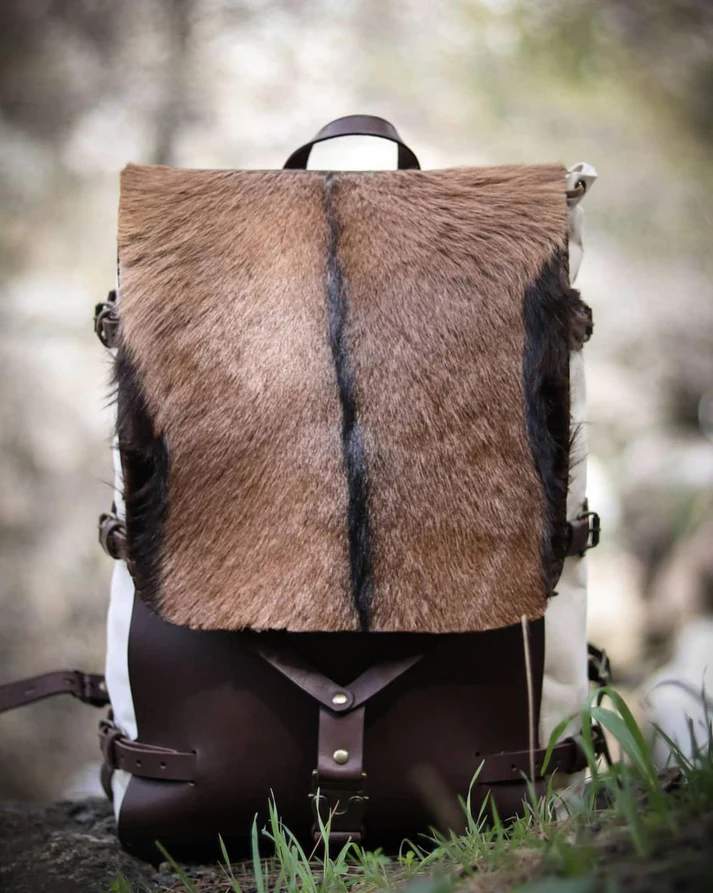Bushcraft is the art of thriving in nature by using traditional skills, survival techniques, and practical tools. Whether you’re heading into the forest for a weekend adventure or preparing for longer-term wilderness survival, carrying the right gear is crucial. A carefully chosen set of tools stored in your bushcraft backpack can make the difference between comfort and struggle, safety and risk.
Why a Bushcraft Backpack Matters
A Buschcraft backpack is built with durability and function in mind, unlike standard hiking packs that prioritize lightweight designs. Typically made from waxed canvas or tough materials, these backpacks are designed to withstand rugged environments while providing space and compartments for essential survival gear. The right organization ensures that tools are not just carried but also easily accessible when needed.
Essential Cutting Tools
One of the cornerstones of bushcraft is the ability to process wood for shelter, fire, and tools. For this reason, cutting equipment is among the most essential gear:
- Fixed-Blade Knife – A reliable bushcraft knife is used for carving, food preparation, fire-making, and even self-defense.
- Folding Saw – Lightweight yet powerful, folding saws make cutting branches or logs efficient without the bulk of a full axe.
- Hatchet or Small Axe – Ideal for chopping wood, building shelters, and splitting logs for firewood.
These tools should be stored securely in the backpack’s side compartments or strapped externally for quick access.
Fire-Making Supplies
Fire is central to survival, providing warmth, light, cooking ability, and a sense of security. A bushcraft backpack typically carries multiple fire-starting options, ensuring redundancy in case one method fails. Common fire-making gear includes:
- Ferrocerium Rod (Ferro Rod) – Reliable in wet conditions and long-lasting compared to matches.
- Waterproof Matches or Lighters – Backup fire starters that are quick and easy to use.
- Tinder Kit – Natural or synthetic tinder (cotton balls, char cloth, or birch bark) stored in waterproof containers for emergencies.
Carrying more than one fire-starting tool increases reliability and reduces the chances of being stranded without heat.
Shelter and Sleeping Equipment
A well-packed bushcraft backpack often includes the means to build or supplement a shelter. This ensures protection from rain, wind, or cold temperatures. Common items are:
- Tarp or Bivvy Sack – Lightweight and versatile for quick shelter setups.
- Wool Blanket or Sleeping Bag – Wool retains warmth even when damp, while compact sleeping bags are excellent for colder nights.
- Paracord or Rope – Useful for securing tarps, making shelters, or even crafting traps.
These items are typically stored at the bottom of the pack, as they are not needed until camp is established.
Cooking and Food Preparation Gear
Survival in the wild requires tools for preparing and cooking food. The following are often part of a bushcraft setup:
- Metal Cooking Pot or Mess Kit – Useful for boiling water, cooking meals, and melting snow.
- Portable Stove (Optional) – While not always necessary, some bushcrafters carry compact stoves for convenience.
- Utensils and Cup – Lightweight eating tools and a cup for hot drinks or soups.
Non-perishable food such as dried meat, rice, oats, or energy bars are often stored alongside cooking gear.
Water Storage and Purification
Access to clean water is vital for survival. A bushcraft backpack usually includes multiple ways to carry and purify water:
- Canteen or Water Bottle – Durable containers for transporting water.
- Water Filter or Purification Tablets – Ensures safe drinking water when collected from natural sources.
- Collapsible Water Bladder – Useful for carrying larger amounts without taking up much space.
These items should be packed where they’re easy to reach, especially during long hikes.
Navigation and Safety Gear
Knowing your direction and ensuring personal safety are critical aspects of outdoor survival. Common navigation and safety tools include:
- Compass and Map – Reliable and lightweight, they don’t depend on batteries.
- Headlamp or Flashlight – Provides visibility during nighttime activities.
- First Aid Kit – Bandages, antiseptic, pain relievers, and essential medical supplies should always be included.
- Whistle and Signal Mirror – Useful for emergencies when needing to call for help.
Clothing and Weather Protection
A bushcraft backpack should always allow room for clothing layers, as weather in the wilderness can be unpredictable. Typical items include:
- Rain Jacket or Poncho – Protection from sudden downpours.
- Thermal Layers – Lightweight clothing that retains warmth.
- Spare Socks and Gloves – Dry clothing can prevent hypothermia and maintain comfort.
Miscellaneous but Useful Items
Beyond the essentials, seasoned bushcrafters often pack smaller items that can make survival more efficient:
- Multi-tool – Combines pliers, screwdrivers, and other small tools in one compact device.
- Notebook and Pencil – For keeping track of navigation, notes, or survival plans.
- Repair Kit – Duct tape, needle, and thread for fixing gear on the go.
- Fishing Kit or Snare Wire – For sourcing food in long-term situations.
Final Thoughts
Packing a bushcraft backpack isn’t about carrying the most gear—it’s about carrying the right gear. Each tool and item plays a specific role in survival, from cutting and fire-making to food preparation and navigation. Proper organization ensures that your equipment is accessible when you need it most, while thoughtful selection prevents unnecessary weight.
With the right balance of tools, supplies, and preparedness, a bushcraft backpack becomes more than just a storage solution—it becomes a lifeline in the wild.





